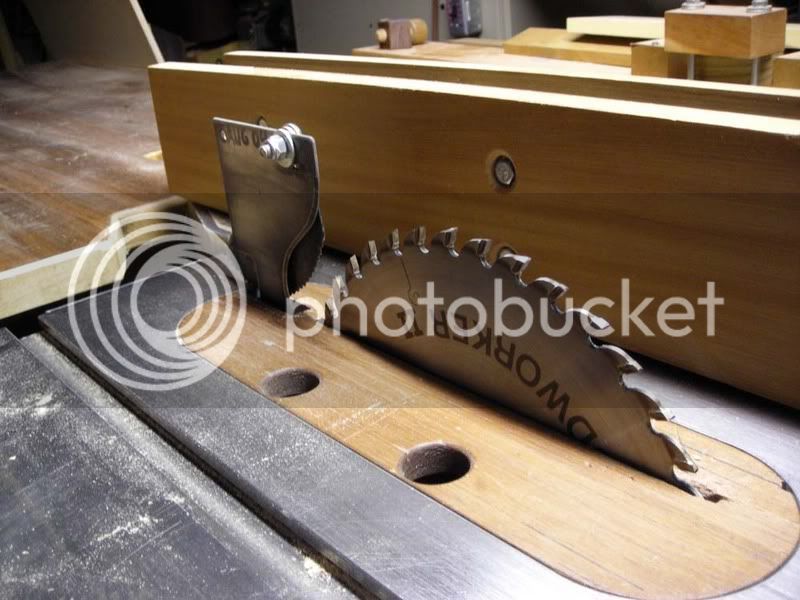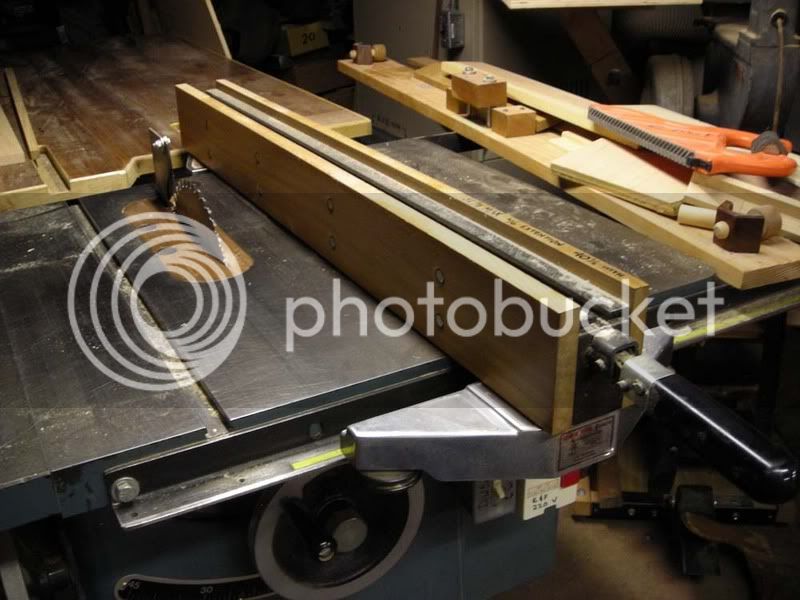I posted this on the chainsaw forum as well..Dont forget your face and ear protection. This guy did and he paid a big price as you can see.
http://www.youtube.com/watch?v=bEU2qQuhjJg
http://www.youtube.com/watch?v=bEU2qQuhjJg

Looks suspiciously like a bit of theatre to me. There are a number of pointers, not least of which is how does a chainsaw shift a piece of wood like that without marking it.
So it's not so much face protection that's needed, more machine guards that should be fitted. Guys in the US have tens of thousands of table saw accidents each year, and still they run unguarded blades. They also use straight through fences, which is asking for trouble.
The problem is, a huge amount of the cuts made on a tablesaw can't even be made with the guards on.
How about just not standing in front of the blade???????????????????????
Sooo, i guess no one ever gets hurt in the UK on a tablesaw? I wonder how many people even own a tablesaw over there "compared to here"???
What cut that can't be made by a guarded saw can't be made by some other means?
What cut that can't be made by a guarded saw can't be made by some other means?

sawyer rob said:The problem is, a huge amount of the cuts made on a tablesaw can't even be made with the guards on.
sawyer rob said:Can't be made by some other means?????? Hell, what cut made on a tablesaw "can't" be made by some other means???

.............. However, some cuts, like putting a dead strait dado in a piece of wood, although CAN be made by other means than a dado blade on the table saw, usually can't be done as precise or as quickly with less setup than when done on a table saw.
Sorry but I'm with Sawyer Rob on this one. I'm all for safety. I do have a splitter right behind the blade on my table saw that keeps the wood from catching the back of the blade and shooting it 80 mph at my face,.........
Curious what you mean by a "strait through fence". Can you explain that for me?
European government regulation is the main reason many of our American ancestors left Europe.
Most people who are milling their own wood are independent souls and do not need a government "official" telling them the safest way to do it. I will intelligently run my power equipment the safest and most productive way I can.
When something does happen I do not blame the government ( They should have a law about that) or the manufacture ( They should have a label for that or that guard should have been "better"). This site is to spread ideas and answer questions about milling. If any one has any ideas on ways to increase safety I am all ears. Thanks.
My point for posting the video was you can get hurt very easily with power tools or chainsaws. It pays to wear and use whatever safety equipment is available. You usually get hurt when you have used a piece of equipment for a long time and get too complacent using it.
I cut the end of my right index finger off on a jointer about twenty years ago. I had turned the machine off and turned my head for just a second and the blades pulled the work piece and my hand into the cutter head. I had used this tool for years and most always used push sticks but on this one occasion didnt.
Take care, take time and be safe. Its up to you.
__________________
Mike
Is is just a short splitter, or is it a riving knife that comes almost to the top of the blade? .... The fence only needs to go just to the front of the saw blade, as anything behind that shouldn't have any effect on the cut. If it goes the width of the bench, it can cause wood to bind against the back of the blade if the wood has the wrong tensions in it when ripping.


What make is the saw and is the fence aftermarket.?? Isnt a table saw pretty much a small sawmill? Your on message here as far as I can tell
Enter your email address to join: